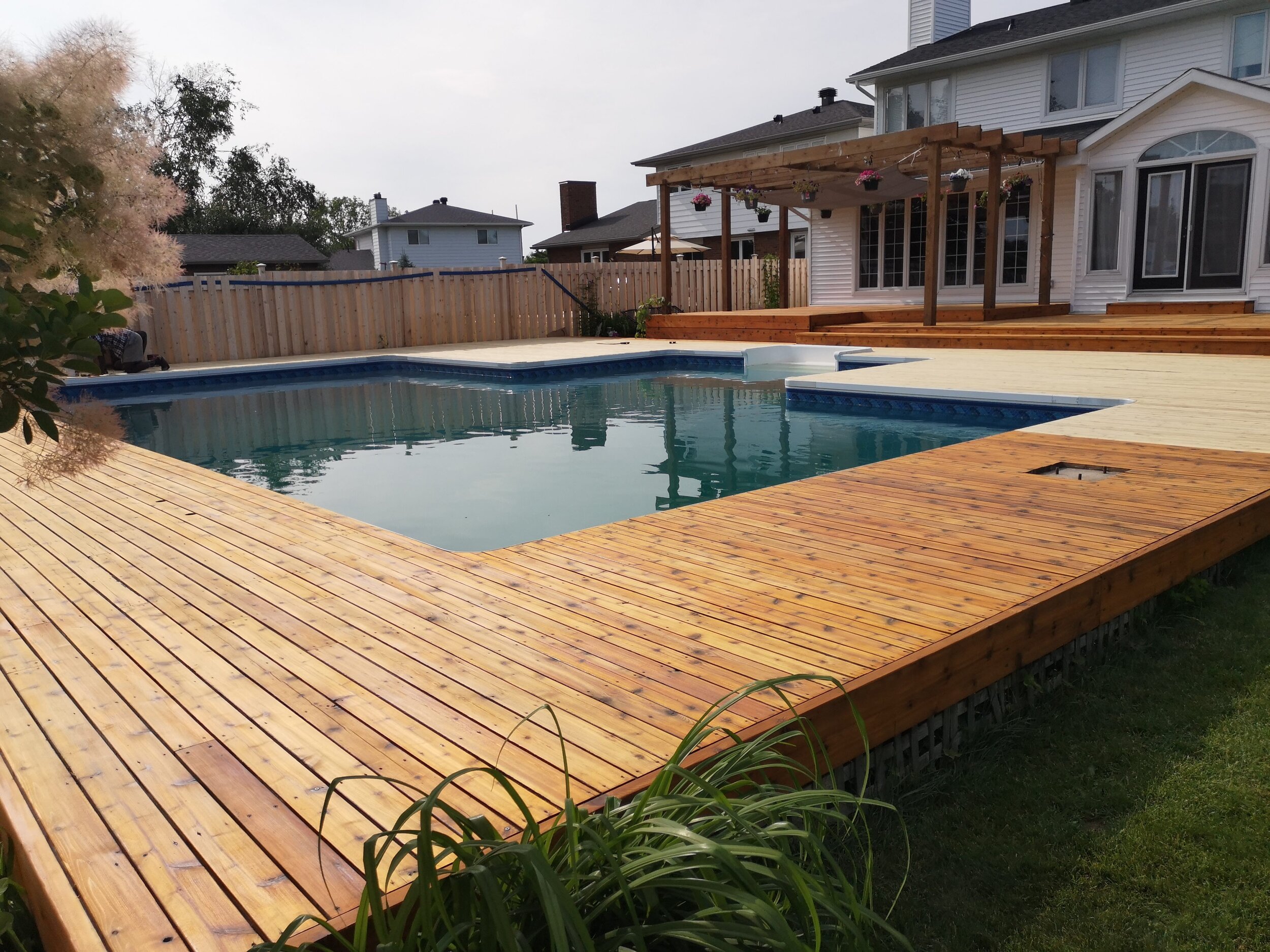
Never Peel Again: The Sand & Stain Blog
Every post, recommendation, and product we discuss is to help you on your journey maintaining your deck, fence, & exterior wood so it never blisters, cracks, or peels.
Never Peel Again: The Sand & Stain Blog
Brand new deck / old faded wood / peeling previous stain / unknown deck finish history—no matter where you are in your wood restoration & maintenance journey, we’re here to help. Scroll & enjoy!
How To Stain A Cedar Deck
The deck has been fully been prepped. Sanding is complete, and so the only thing left to do is the most satisfying step: finishing with your colour of choice for protection, and that undeniable beauty that only a true penetrating oil stain can provide.
There are a few different ways you can tackle this. To save you time, here is how we recommend doing this, and how we have served happy clients for years in our own business. This is is especially important to know, because you’ll be able to get away with stain reapplications without sanding again for years (perhaps forever) using the these tools, techniques, and products.
NOTE: The process for finish staining pressure treated wood is the as staining cedar—however, the prep is very different. If you have pressure treated wood, check out our post 5 Reasons You Should Never Sand Pressure Treated Wood here to make sure you do it right the first time.
How To Sand A Cedar Deck
Sanding is the first step to setting up your deck, fence, or exterior wood project for longevity and success. It may not be the funnest activity you’ll ever do, but if this crucial prep work is done how we recommend it, you won’t have to prep sand it for years—and perhaps ever again.
Unless you have pressure treated wood, do not skip this step. You need to sand your cedar wood deck, even if it’s brand new and hasn’t grayed yet. This is because it has what’s called mill sheen on its surface that even penetrating oils will not be able to soak into as easily as they should.
Remember, the two biggest reasons a deck fails (peels, blisters, cracks, chips, etc.) is because of: 1) poor prep work, and 2) product quality or type. Here’s how we avoid that first reason and how to get it right the first time.
Part 1: What You’ll Need …


